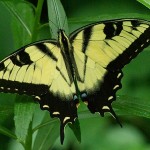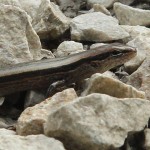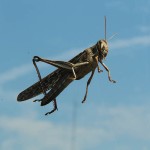This exciting observation was made in the Lockwood area of Dallas Texas, and comes to us from Annika Lindqvist. Annika spotted this Northern Bobwhite in her backyard while it was helping itself to the contents of a cat food bowl.
As late as the 1980s, Northern Bobwhite were very common in North Texas. Their unique call was ubiquitous. As a boy, I would flush quail nearly every time I ventured into the woods. There were a lot of them around back then.
But then something happened. Sometime between the late 1980s and the mid 1990s the Northern Bobwhite population in North Texas virtually disappeared. Nobody is really sure what factor or combination of factors are responsible.
Nature has a certain ebb and flow, though. If a species can leave a particular area, then it can also return when conditions improve. The time frames will be their own.
So, does this sighting represent the return of wild Northern Bobwhites to the Dallas/Fort Worth Area? Maybe. I have heard reports of recent sightings in other parts of the city over the past year, but this is the first photograph I have received.
It is most likely—and best to assume for the time being—that this is quail is an escaped pen-raised bird. But let’s all keep our eyes open. If you spot a Northern Bobwhite in the DFW Area I’d like to hear about it.


Observation Details
| County | – | Dallas |
|
| City | – | Dallas | |
| Date | – | Apr 20, 2013 | |
| Time of Day | – | Evening | |
| Temperature | – | Cool (50-69°F/10-21°C) | |
| Weather | – | Partly Cloudy | |
| Habitat | – | Residential-Single Family | |
| Type of Behavior | – | Roaming | |
| Gender | – | Male | |
| Maturity | – | Adult | |
| Observer | – | Annika Lindqvist |







Chris, as you probably know, the Bob White has become exceedingly rare throughout its very wide range in North America. Few localities now harbor the population density they once did. A variety of ills have been proposed as being responsible. Among them are “clean farming” and “improved pastures,” which do not provide the diverse habitat formerly available. The bird was quite successful with mixed farming that included waste spaces and weedy fence rows. Giant ragweed was a favorite food and ragweed stands provided shaded loafing areas. Those are mostly gone. Fences are often treated with herbicides. Pastures are monocultures of a single grass species. In Texas that is often bermuda, which produces dense cover without the bunching phenomenon of native grasses.
Other factors include introduced predators, mainly feral cats which have had a population explosion coincident with the decline in quail, and fire ants, which destroy the nests.
Pesticides may also be a factor, to which these ground nesting birds are more directly exposed than are arboreal species.
Some ranches in NW Oklahoma still harbor respectable populations of Bob White, but they are ones that maintain native vegetation, and minimally use pesticides. They also are distant from urban sources of feral cat populations, and fire ants have not become established.
David,
Always glad to get you input on these things. This is one heck of a sighting don’t you think?
I puzzle over the disappearance of these guys a lot. Also Ornate Box Turtles. I’m sure there are a multitude of reasons for their disappearance… I’m inclined to put the fire ant at the top of the list of possible causes. You may also recall that the 1980’s included a lot of cold winters, and the mid-late 80’s produced a lot of flood events. I can’t help but wonder if those things were important factors as we continue now with mild winters and drought conditions.
A Bob White anywhere these days is almost a miracle. Congratulations to the photographer for getting this one. Interesting that it was eating cat food. I would agree with you that there is a reasonable likelihood that it is an escaped bird. However, the beak does not appear to be cropped, which is common in pen raised birds to prevent them from injuring each other as they are prone to do when confined. In natural coveys they don’t do so, but in confinement with high density they peck each other, causing sores that become infected.
I think I may have heard a bobwhite in Grand Prairie near the Joe pool lake dam. I never saw the bird but it was calling loudly in some brush by a field. It sounded more like a bobwhite then anything else and I’ve checked several bird songs. Such as the Nightjar family. I’m sure it wasn’t a mockingbird or some sort of mimic because it was hiding at the bottom vegetation, I tried to see it but could never find it. It was quite late in the day. I may have taken an audio recording but sadly if I did it’s long lost. I have heard it in similar conditions twice, May 6th and July 11th 2019.
The dam area is often mowed but when I did hear the bird the grass was quite tall. I bird the area around the sightings a lot now and it’s been more than a year since I’ve heard anything strange.
On the plus side there is a good sized area of land under W camp wisdom road that is quite undeveloped including an area of brushy prairie by the intersection with Belt line road. The area has coyotes, skunks, racoons, armadillos, Bobcats, opossums, cottontail rabbits and Wild Turkey among other things. Unfortunately it’s in Private property as far as I know